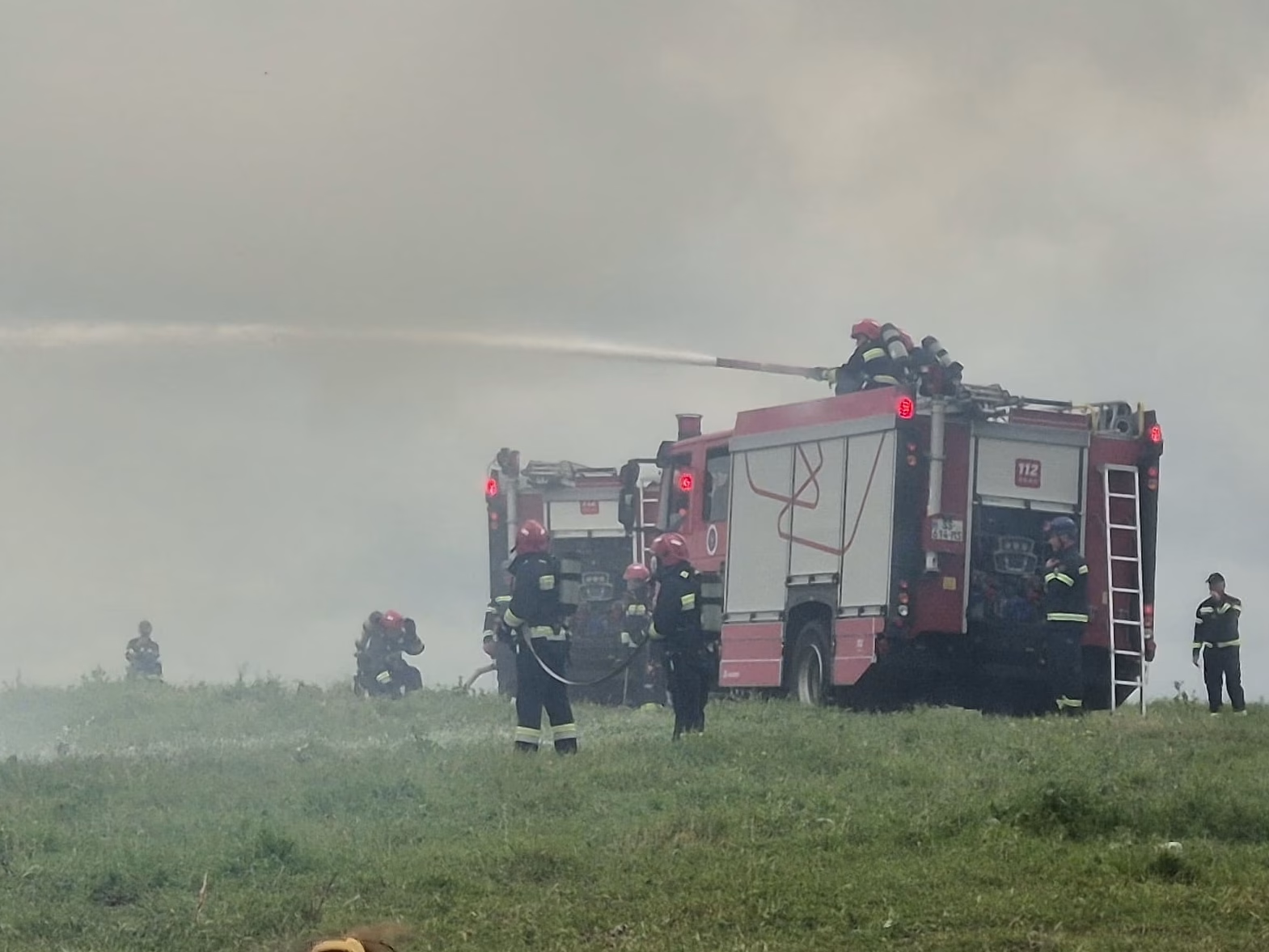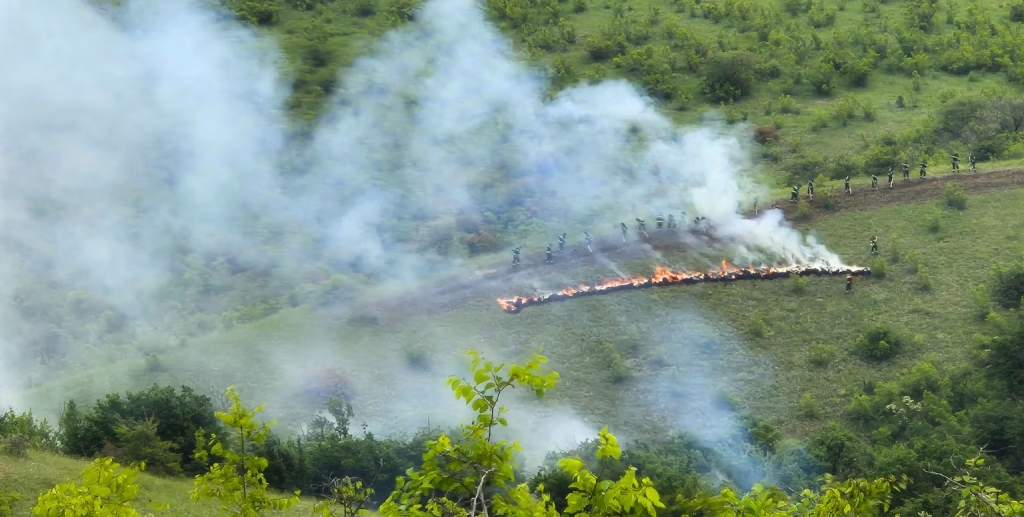In the South Caucasus, between the mountain ranges of eastern Georgia and the natural landscapes of northwestern Azerbaijan, wildfires represent a frequent and complex threat. Fires do not recognize borders, and for this reason they require joint strategies, advanced tools, and a structured transnational cooperation framework.
“In a cross-border context, managing a wildfire is not just about extinguishing the flames. It means reading the landscape, understanding its vulnerabilities, and building shared responses. This is exactly why SAILOR was created,” says Andrea Trucchia, researcher in the Wildfire Risk and Forest Biodiversity Conservation Department at CIMA Research Foundation.
The SAILOR project (Cross-Border Risk Assessment and Action Plan in Georgia-Azerbaijan) was conceived with the aim of strengthening wildfire risk assessment and management capacities in the border area between Georgia and Azerbaijan. Funded by the EU Civil Protection Mechanism and coordinated by the University of Western Macedonia, the project actively involved the national civil protection authorities of both countries—the Ministry of Emergency Situations (MES) of Azerbaijan and the Emergency Management Service (EMS) of Georgia—and was developed in close synergy with the European programme PPRD East 3.
Over the course of two years, thanks to the technical-scientific contribution of CIMA Research Foundation and other European partners, the project has developed static fire risk maps using AI-based models, promoted the use of innovative technologies such as drones and early warning systems, and launched joint training programmes for both emergency operators and decision-makers. This collaborative effort culminates in the final event, currently taking place in Tbilisi, where the project results are being presented and the foundations for future bilateral cooperation agreements between Georgia and Azerbaijan are being laid.
Field exercises and joint simulations
Within the SAILOR project, field exercises have been a fundamental step to test, adapt, and consolidate integrated wildfire risk management strategies. These were not merely simulations of emergency scenarios, but concrete processes of cooperation, technology testing, and the creation of realistic operational conditions. Through field exercises and joint simulations, national civil protection systems improved their response capacities, enhanced cross-border communication, and validated advanced tools for forecasting and decision-making support.
Two major exercises marked this pathway—one in Azerbaijan, the other in Georgia.
The first was held in Qabala, Azerbaijan, where a table-top exercise simulated a wildfire originating in Georgia and spreading across the border. The event was a key opportunity to test the forecasting, response, and coordination capabilities of the two countries.
Andrea Trucchia, who took part in the activity, commented: “During the simulation, we observed in real time the interaction between regional operations centres and municipal-level authorities. The integration of the PROPAGATOR fire spread model with locally collected meteorological data allowed us to estimate the fire’s trajectory in just a few minutes, effectively guiding the operational response.” The exercise also strengthened institutional ties between the two nations through joint visits to regional centres and the development of a shared cooperation plan.


The most recent field exercise was conducted just days ago in Dedoplistskaro Municipality, in Georgia’s Kakheti region. In this area of high wildfire susceptibility, a complex simulation of a large-scale wildfire response was carried out. Georgian emergency teams employed drones, weather stations, and the PROPAGATOR fire simulation tool for real-time monitoring and modelling of the fire’s behaviour in a highly coordinated and intensive operational setting.
On this occasion, CIMA Research Foundation donated weather stations to the EMS to support local early warning and prevention capacities. The exercise concluded with a session dedicated to sharing lessons learned with local stakeholders, with the goal of consolidating knowledge and outlining future steps.





From training to strategic planning
Alongside field simulations, the project invested significantly in advanced training, viewed as a cornerstone of effective integrated wildfire risk management strategies. Training programmes addressed key topics such as operational drone use, rapid response and prevention strategies, and the protection of vulnerable communities and cultural heritage.
Through practical workshops, technical demonstrations, and joint sessions among project partners, a shared operational language was fostered among civil protection systems from different national contexts—facilitating both collaboration and the exchange of best practices.

Drone training and photogrammetry activities also played a central role, enabling local authorities to autonomously adopt and operate new technologies. “Equipping partner countries with technical expertise means strengthening their autonomy and resilience,” explained Flavio Pignone, expert UAV pilot at CIMA Research Foundation.

Training activities were closely integrated with the development of wildfire susceptibility maps using machine learning models, which provide predictive scenarios also in the context of climate change. The models, calibrated on the broader Caucasus region, now enable risk projections under various future climate conditions.
A shared legacy
The final event in Tbilisi does not merely mark the conclusion of a project. It marks the beginning of a new operational phase, which will take shape through the signing of a Transboundary Cooperation Protocol between Georgia and Azerbaijan to implement a joint cooperation plan.
Over the two-day event, partners are showcasing the results achieved, sharing experiences, and outlining the next steps for a lasting and coordinated strategy. The direct involvement of stakeholders, public authorities, and local media highlights the significance and impact of the work carried out in recent years.
“SAILOR has been a laboratory of innovation and cooperation. But above all, it has been a human project—uniting expertise, territories, and visions. Because when a wildfire crosses borders, only shared knowledge can truly make a difference,” concludes Trucchia.







